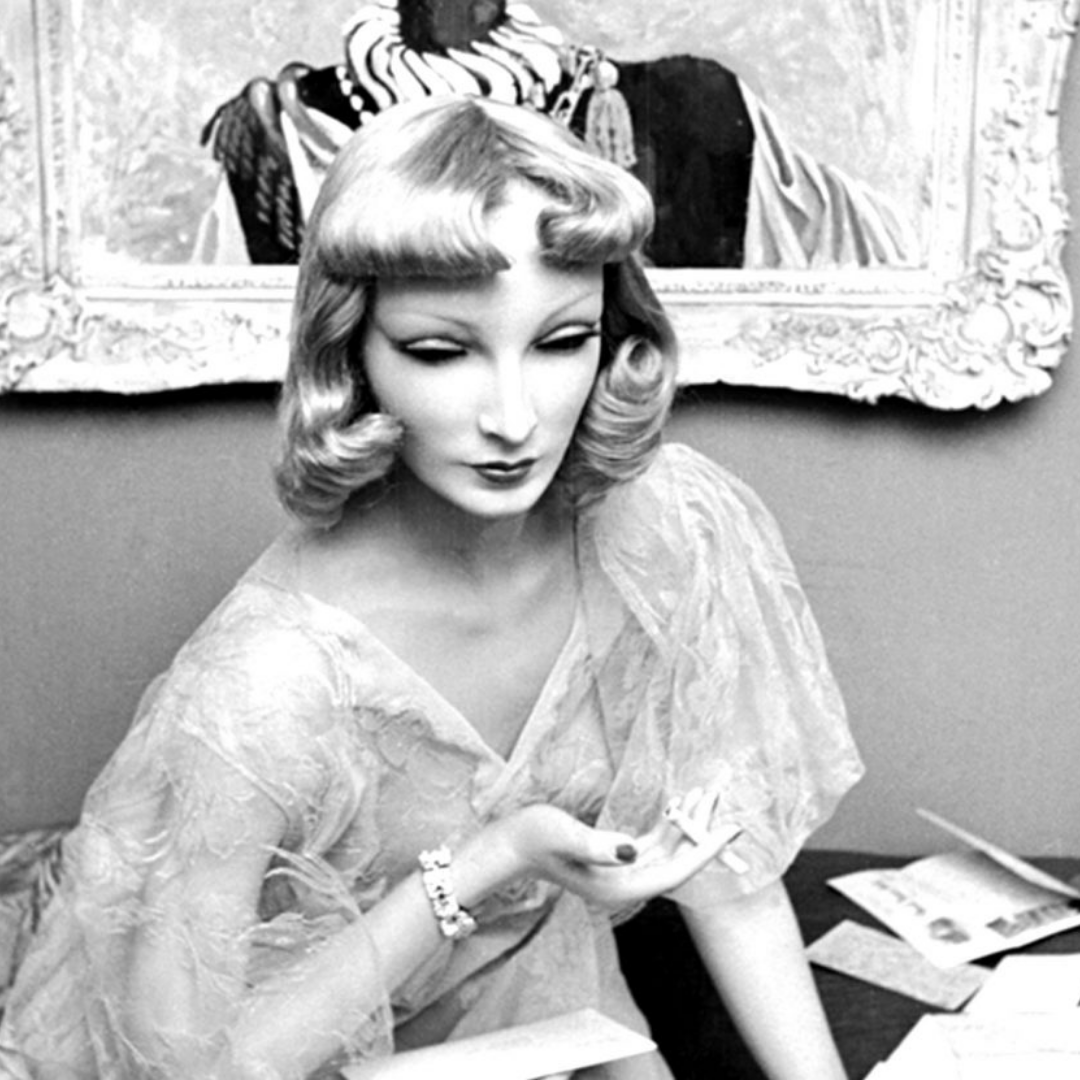Cynthia the Mannequin
December 31, 2021

By: Allie Little
In 2016, Sophia the Robot was introduced to the world at that year’s South By Southwest Film Festival. This appearance made Sophia a bonafide celebrity and household name. Some people loved her, some people hated her, but everyone was fascinated by this humanoid robot. Strangely enough, this is not the first time a human-like object gained international recognition. Cynthia the Mannequin was a socialite in 1930s New York.
As a mannequin, Cynthia couldn’t interact with people in the traditional sense, but that didn’t stop her name and face from spreading throughout the nation. She was photographed for magazines, placed in film roles, and given designer jewelry and clothes by some of the biggest names in fashion. She was living the life that so many desired. She was also made of 100 lbs of plaster.
Since the beginning of the fashion industry, designers and shops knew the value of making clothes that were just out of reach of the typical consumer. Having clothes be unattainable made them even more desirable. This is still how the fashion industry succeeds. By having beautiful, famous, and wealthy people model the newest Gucci bag, Tom Ford suit, or Oscar de la Renta gown, these companies develop a sense of class and culture around their products. A typical person can see pictures of the clothes from a fashion show in New York or Paris, but won’t be able to buy them in their local department store until years later, if ever.
Once these designer clothes arrive at a shop, mannequins are commonly used to continue this idea of prestige. Often wearing a size 2 and standing about 6 ft tall, these mannequins don’t represent the typical shopper, nor are they supposed to. Before the 1930’s, mannequins were less life-like. They typically had unusually long faces, making the proportions of the face seem more like a cartoon, but they were still wearing the trendiest clothes and on display for window shoppers to gawk at. We can thank (or blame) Lester Gaba for the popularization of a more life-like mannequin design.
Originally a soap carver, Lester Gaba was hired to design a mannequin with high detail and style that would catch the attention of any shopper that glanced at the window display she was posed in. He settled on a design he called Cynthia. This blonde-haired, dead-eyed, beauty was immortalized in a Life Magazine spread of pictures, showing her out on the town like any other New York socialite. The spread featured pictures of her getting her nails done, attending an opera in a box seat, touring the city, and having a casual dinner while smoking a cigarette. She was always stunningly dressed, of course.
The feature in Life was enough to catapult her into the highest echelon of fame. She graced the covers of magazines, appeared in the movie Artists and Models Abroad, became a brand ambassador for brands like Tiffany and Cartier, and Saks Fifth Avenue even gave her a credit card to their store. I would love to see what bill she racked up on that card. She also hosted her own radio show, a level of fame that is so uniquely from the 1930s. I tried so hard to find a recording of this but found nothing to help me understand how this mannequin, with no ability to speak, hosted her own radio show.
Like all famous and influential people, Cynthia eventually fell out of the public eye. Actually, it was more like she slipped out of the public eye. While getting her hair done, Cynthia slipped out of the salon chair and broke into many hundreds of plaster pieces. Her creator Lester attempted to put her back together like before, but she would never reclaim that starpower she once possessed. The final nail in Cynthia’s metaphorical coffin was in 1942 when Lester joined the military. Because Lester was the only way for her to get from one place to another and he handled all her business decisions, Cynthia wasn’t able to continue her career. Lester tried to bring Cynthia back to an audience in the 1950s, but the post-WWII public was not as enthralled by the fashion mannequin as the Depression Era public was. She never regained her status as a fashionable New York socialite.
Now, we see her influence everywhere. We can thank Lester and Cynthia for every mannequin that gives you a weird feeling in your gut because it is a little too human-like. Cynthia hasn’t been seen since the late 1950s. Hopefully she’s living a satisfying life at whatever place former famous mannequins go to live out their days.